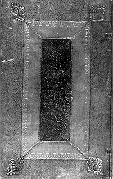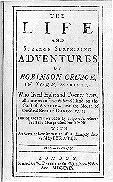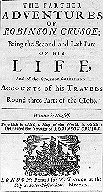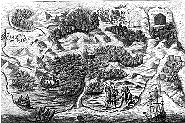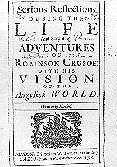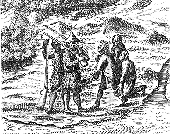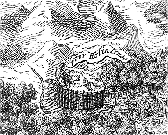 |
University of Miami Libraries Acquires Two Millionth Volume
|
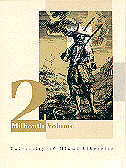 The first edition of Daniel Defoe's Robinson Crusoe, printed in London by William Taylor in 1719, is the two millionth volume to join the collection of the University of Miami Libraries. The first edition of Daniel Defoe's Robinson Crusoe, printed in London by William Taylor in 1719, is the two millionth volume to join the collection of the University of Miami Libraries.
The complete title of this world famous work, The Life and Strange Surprizing Adventures of Robinson Crusoe, of York, Mariner: Who lived Eight and Twenty Years, all alone in an uninhabited Island on the Coast of America, near the Mouth of the Great River of Oroonoque; Having been cast on Shore by Shipwreck, wherein all the Men perished but himself. With An Account how he was at last as strangely deliver'd by Pyrates, is itself a lengthy introduction to the great adventure story of a man shipwrecked on a Caribbean island. Also acquired with this important work are two related titles, written by Defoe shortly after the publication of Robinson Crusoe. The Farther Adventures of Robinson Crusoe (1719) and Serious Reflections during the Life and Surprising Adventures of Robinson Crusoe (1720), what today would be considered sequels, seek to capitalize on the
With its geographic focus in the Caribbean, Robinson Crusoe is a significant addition to the Library's outstanding cache of materials on the region. Robinson Crusoe, a landmark work of fiction, occupies a unique place in English literature, and today the novel remains one of the most popular adventure tales ever written. Countless reprints, numerous translations and frequent adaptations of this epic tale can be found across the globe. The story continues to entertain readers of all ages with the classic confrontation between man and his environment, the struggle of an ordinary man who finds himself in extraordinary circumstances. Concurrently, Crusoe takes us on an emotional, spiritual, and, many have argued, political adventure that helps us understand our modern world. In retrospect, the University of Miami Library and Robinson Crusoe have much in common. They exist in a sub-tropical setting, faced with the need to adjust and survive in a new world. Both have celebrated accomplishments and success, and weathered challenges and heartaches. Through hard work and diligence, each has adapted to the mix of cultures, politics, religion and technology. Perhaps, most importantly, both Crusoe and the Library remain true to themselves, dedicated to the search for excellence and fulfillment in a world that tests their resourcefulness each and every day. The Library wishes to acknowledge the assistance of the Friends of the University of Miami Library, the Marjory Stoneman Douglas Endowment Fund, the George Rosner Endowment Fund, and Juan and Ophelia Rocha in the acquisition of this two millionth volume.
This landmark work of English literature, the subject of numerous editions and translations worldwide, remains one of the most popular novels ever written. With its geographic focus in the Caribbean, this important work of fiction is a significant addition to the Library's outstanding cache of materials on the region. The story continues to entertain readers of all ages with the classic confrontation between man and his environment, the struggle of an "ordinary" man who finds himself in "extraordinary" circumstances. Concurrently, Crusoe takes us on an emotional, spiritual, and, many have argued, political adventure that helps understand our modern world.
The map displayed here offers an interesting view of the world, as understood in 1719. The continent of North America includes a large region identified as "Florida," and California appears as an island. Latin America is designated as New Spain and the Caribbean region includes the islands of Cuba, Jamaica, and Hispaniola. A short distance further south appears "R. Cruso's I. (Robinson Crusoe's Island).
In the conclusion to the Preface, Defoe offers the observation that "...I am well assured, that if the Obstinacy of our Age should shut their Ears against the just Reflections made in this Volume...there will come an Age, when the Minds of Men shall be more flexible, when the Prejudices of their Fathers shall have no Place...and one Generation be edified by the same Teaching, which another Generation had despised."
|
|
Last updated 23 March 1996
|
